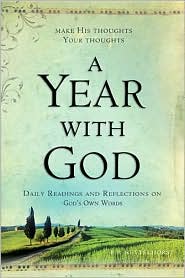Earlier this week, I proposed illustrating this column with examples of the caricatures first published last fall in a Danish newspaper. If readers are to form rational opinions about both the ferocity of Islamic reaction and the American news media's response to it, I thought, surely at least a glance at one or two of these mild cartoons is required. I suggested that the cartoons run inside the Calendar section with a notice in this space concerning their location. That way, those who wanted to see them could, while those who might be offended simply could avoid that page.
I fully expected the proposal to be rejected, and it was — quickly and in writing, though the note also expressed the hope that the column would be as forceful and candid as possible.
This paper has ample company. The New York Times, the Washington Post, Wall Street Journal and USA Today all have declined to run the cartoons because many Muslims find them offensive. The people who run Associated Press, NBC, CBS, CNN and National Public Radio's website agree. So far, the only U.S. news organizations to provide a look at what this homicidal fuss is about are the Philadelphia Inquirer, the Austin American-Statesman, the Fox cable network and ABC.
Then, later in the collumn he points out:
Nothing, however, quite tops the absurdity of two pieces on the situation done this week by the New York Times and CNN. In the former instance, a thoughtful essay by the paper's art critic was illustrated with a 7-year-old reproduction of Chris Ofili's notorious painting of the Virgin Mary smeared with elephant dung. (Apparently, her fans aren't as touchy as Muhammad's.) Thursday, CNN broadcast a story on how common anti-Semitic caricatures are in the Arab press and illustrated it with —you guessed it — one virulently anti-Semitic cartoon after another. As the segment concluded, Wolf Blitzer looked into the camera and piously explained that while CNN had decided as a matter of policy not to broadcast any image of Muhammad, telling the story of anti-Semitism in the Arab press required showing those caricatures.
He didn't even blush.
If the Danish cartoons are, in fact, being withheld from most American newspaper readers and television viewers out of restraint born of a newfound respect for people's religious sensitivities, a great opportunity to prove the point is coming. A major American studio, Sony, shortly will release a film version of Dan Brown's bestselling novel "The Da Vinci Code." It's fair to say that you'd have to go back to the halcyon days of the Nativist publishing operations in the 19th century to find a popular book quite as blatantly and vulgarly anti-Catholic as this one.
Its plot is a vicious little stew of bad history, fanciful theology and various slanders directed at the Vatican and Opus Dei, an organization to which thousands of Catholic people around the world belong. In this vile fantasy, the Catholic hierarchy is corrupt and manipulative and Opus Dei is a violent, murderous cult. The late Pope John Paul II is accused of subverting the canonization process by pushing sainthood for Josemaría Escrivá, Opus' founder, as a payoff for the organization's purported "rescue" of the Vatican bank. The plot's principal villain is a masochistic albino Opus Dei "monk" for whom murder is just one of many sadistic crimes. (It probably won't do any good to point out that, while it's unclear whether Opus Dei has any albino members, there definitely are no monks.)
Now many Catholics, this one included, regard Opus Dei as a creepy outfit with an unwholesome affinity for authoritarianism gleaned from its formative years in Franco's Spain. But neither it nor its members are corrupt or murderous. It is a moral — though thankfully not legal — libel to suggest otherwise. Further, it is deeply offensive to allege — even fictionally — that the Roman Catholic Church would tolerate Opus, or any organization, if it were any of those things.
So how will the American news media respond to the release of this film?
Certainly, there should be reviews since this is a news event, though it would be a surprise if any of them had something substantive to say about these issues. But what about publishing feature stories, interviews or photographs? Isn't that offensive, since they promote the film? More to the point, should newspapers and television networks refuse to accept advertising for this film since plainly that would be promoting hate speech? Will our editors and executives declare their revulsion at the very thought of profiting from bigotry?
Naaaaww.
It won't happen for a simple reason that has nothing to do with the ideas being expressed or anybody's sensitivities, religious or otherwise. It won't happen because Pope Benedict XVI isn't about to issue a fatwa against director Ron Howard or star Tom Hanks. It won't happen because Cardinal Roger M. Mahony isn't going to lead an angry mob to burn Sony Studios, and none of the priests of the archdiocese is going to climb into the pulpit Sunday and call for the producer's beheading.
On the other hand, perhaps the events of the last two weeks have shocked our editors and news executives into a communal change of heart when it comes to sensitivities of all religious believers.
Right.
That will happen when pigs soar through the skies on the wings of angels, when the lion reclines with the lamb on high-thread-count Egyptian cotton sheets and no one bothers to beat the world's very last sword into a ploughshare because all the hungry have been fed.
Until that glorious day, those of us who inhabit this real world will continue to believe that the American news media's current exercise in mass self-censorship has nothing to do with either sensitivity or restraint and everything to do with timidity and expediency.
Read the whole thing:Let's be honest about cartoons. It is intersting to me that the Los Angeles Times allows such harsh criticism of its editorial policies on its own pages.






No comments:
Post a Comment